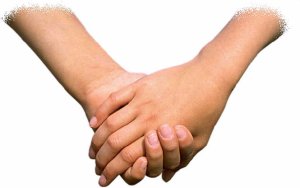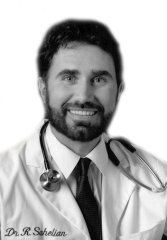HOME > ARCHIVES & ARTICLES ON ALTERNATIVE HEALERS > COMPANY BLOG > SUBSCRIBE
 Shay is in her third week at the Optimum Health Institute in Quemado, California. She has this report filed today (Friday, Feb. 17, 2006):
Shay is in her third week at the Optimum Health Institute in Quemado, California. She has this report filed today (Friday, Feb. 17, 2006):
Dear Readers,
 Today we are serving the second-weekers the food we prepared for them. We worked on food preparation all this week. We learned to make the different crackers, the different condiments and recipes. We made salads, and worked with fermentation, making sauerkraut, a variety of crackers and some soups, all raw, all natural, all organic. Today we are serving the second-weekers the food we prepared for them. We worked on food preparation all this week. We learned to make the different crackers, the different condiments and recipes. We made salads, and worked with fermentation, making sauerkraut, a variety of crackers and some soups, all raw, all natural, all organic.
 At 11:30 I go over to get our raw food cafe ready to go. The theory behind that is to give people skills to go home with, so there is some kind of preparedness in preparing and using the foods we are using here. At 11:30 I go over to get our raw food cafe ready to go. The theory behind that is to give people skills to go home with, so there is some kind of preparedness in preparing and using the foods we are using here.
 Last week, we were allowed to grow wheatgrass and sprouts in our rooms. That's one of the courses you take in Week Two--organic gardening--with wheatgrass and sprout growing. They only focus on healthy, de-toxing food here, but they give us skills to go back into our lives to do what we've learned. Or, at least to go back and use what we're picking and choosing to do. Last week, we were allowed to grow wheatgrass and sprouts in our rooms. That's one of the courses you take in Week Two--organic gardening--with wheatgrass and sprout growing. They only focus on healthy, de-toxing food here, but they give us skills to go back into our lives to do what we've learned. Or, at least to go back and use what we're picking and choosing to do.
 This morning we had a testimonial gathering, and there were probably 90 people there--the participants from this last week. People share their experiences of having been here for at least a week, and whatever kinds of healings they are experiencing. Then, the Three-Weekers, myself and nine other people, were awarded a certificate for having gone through the raw food courses here, so that was fun. This morning we had a testimonial gathering, and there were probably 90 people there--the participants from this last week. People share their experiences of having been here for at least a week, and whatever kinds of healings they are experiencing. Then, the Three-Weekers, myself and nine other people, were awarded a certificate for having gone through the raw food courses here, so that was fun.
 Stay tuned next month for my report on how I do integrating what I've learned into my home and business life in the "real world." Until then... Stay tuned next month for my report on how I do integrating what I've learned into my home and business life in the "real world." Until then...
In vibrant health,


Shay Arave
President
Pure Energy Rx
 Fed up with his own health crises, Mike Adams began what was to become his life's work. Riddled with obesity, back pain, and a well-developed disdain for what his doctors were NOT doing for him, Adams launched himself into over 5,000 hours of research to untangle the truth from the medical and pharmaceutical hype. At times he's downright angry, and virtually shouts from his soap box, but everything Adams writes in his some 1,500 articles and books is based on sound, provable science, and because he's applied everything he discovered to his own body, the guy has street cred.
>>> MORE
Fed up with his own health crises, Mike Adams began what was to become his life's work. Riddled with obesity, back pain, and a well-developed disdain for what his doctors were NOT doing for him, Adams launched himself into over 5,000 hours of research to untangle the truth from the medical and pharmaceutical hype. At times he's downright angry, and virtually shouts from his soap box, but everything Adams writes in his some 1,500 articles and books is based on sound, provable science, and because he's applied everything he discovered to his own body, the guy has street cred.
>>> MORE
 Our resident Life Coach and Synergy Specialist, Charly Emery, in her series, "Manifest What You Dream of Today," explores the power of desire in focusing our attention, removing distractions, and adding emotional content to our lives. When inspiration hits, we ride the energy until it fades, and now we're back where we started. Charly offers some ways to look at this phenomenon and use it to learn something about yourself, and to get yourself above it. "Developing a new attitude and method of attaining your goals often feels very exhilarating; however, it may not prevent you from experiencing the classic cause and effect slump." >>> MORE
Our resident Life Coach and Synergy Specialist, Charly Emery, in her series, "Manifest What You Dream of Today," explores the power of desire in focusing our attention, removing distractions, and adding emotional content to our lives. When inspiration hits, we ride the energy until it fades, and now we're back where we started. Charly offers some ways to look at this phenomenon and use it to learn something about yourself, and to get yourself above it. "Developing a new attitude and method of attaining your goals often feels very exhilarating; however, it may not prevent you from experiencing the classic cause and effect slump." >>> MORE
|
F.Y.I. - Interesting Health News Tidbits
|
The Water Cure (free e-book)...
by Mike the Health Ranger

 Today I'm sharing the true story of what is probably the least-understood health secret in the Western world. It's something your doctor never told you and health authorities never learned. And yet it could be the key to solving the very health problems you may be suffering from right now, including high blood pressure, asthma and even arthritis. This secret isn't patented. It's not available by prescription and it costs almost nothing. In fact, from time to time, it falls out of the sky and collects in huge pools on the Earth. What is it? Water. Today I'm sharing the true story of what is probably the least-understood health secret in the Western world. It's something your doctor never told you and health authorities never learned. And yet it could be the key to solving the very health problems you may be suffering from right now, including high blood pressure, asthma and even arthritis. This secret isn't patented. It's not available by prescription and it costs almost nothing. In fact, from time to time, it falls out of the sky and collects in huge pools on the Earth. What is it? Water.
 Water may someday be recognized as the single most important healing medicine we could possibly consume, and our special report, "The Healing Power of Water," explains why. You can download it right now at: Water may someday be recognized as the single most important healing medicine we could possibly consume, and our special report, "The Healing Power of Water," explains why. You can download it right now at:
www.truthpublishing.com/watercure.html
 Physicians rarely promote the curative properties of H2O, but Dr. Batmanghelidj, M.D. has studied water's effect on the human body and has found it to be one of the best pain relievers and preventative therapies in existence. I was one of the last people to interview the late Dr. Batmanghelidj, and I listened in awe as he shared his research and stories about "The Healing Power of Water." In a fascinating one-hour phone conversation I will never forget, Dr. B. shared things like: Physicians rarely promote the curative properties of H2O, but Dr. Batmanghelidj, M.D. has studied water's effect on the human body and has found it to be one of the best pain relievers and preventative therapies in existence. I was one of the last people to interview the late Dr. Batmanghelidj, and I listened in awe as he shared his research and stories about "The Healing Power of Water." In a fascinating one-hour phone conversation I will never forget, Dr. B. shared things like:
- Which common ailments and "diseases" are actually caused by dehydration
- Why many doctors use water-regulating antihistamines to alleviate pain
- How Dr. Batmanghelidj unintentionally discovered water's healing properties
- Why most people are chronically dehydrated and suffer from symptoms of dehydration that are labeled "diseases"
- Which ingredients in soft drinks deplete the body's water reserves
- Why thirst is not a reliable indicator of dehydration
- Why the body produces cholesterol and how water keeps it in balance
- Why Dr. Batmanghelidj believes the public is being mislead about AIDS
- How dehydration impairs mental functioning
- Why some organizations want to withhold alternative health information from the public
- How lack of water causes depression
- Why popular beverages are no substitute for water
- How dehydration causes the vascular system to constrict, leading to hypertension
- How to recognize signs that your body is starting to dehydrate
- Why restaurants push you to drink disease-promoting soft drinks
- Why and how water effectively treats pain and inflammation
Want to learn the rest of this fascinating story? Download "The Healing Power of Water" right now and read it yourself.
>>>> THE BOOK
The great mineral decline...

 The mineral content of milk and popular meats has fallen significantly in the past 60 years, according to a new analysis of government records of the chemical composition of everyday food. The research looked at government tables published in 1940, and again in 2002, in the nutritional bible, The Composition of Foods, to establish levels of important minerals in dairy products and meat before the second world war and today. The mineral content of milk and popular meats has fallen significantly in the past 60 years, according to a new analysis of government records of the chemical composition of everyday food. The research looked at government tables published in 1940, and again in 2002, in the nutritional bible, The Composition of Foods, to establish levels of important minerals in dairy products and meat before the second world war and today.
 The research, which is contested by the food and farming industry, found a marked decline in nutritional value during the period. The analysis is published in this month's Food magazine by the consumer watchdog the Food Commission. The levels of iron recorded in the average rump steak have dropped by 55%, while magnesium fell by 7%. Looking at 15 different meat items, the analysis found that the iron content had fallen on average by 47%. The iron content of milk had dropped by more than 60%, and by more than 50% for cream and eight different cheeses. Milk appears to have lost 2% of its calcium, and 21% of its magnesium too. The research, which is contested by the food and farming industry, found a marked decline in nutritional value during the period. The analysis is published in this month's Food magazine by the consumer watchdog the Food Commission. The levels of iron recorded in the average rump steak have dropped by 55%, while magnesium fell by 7%. Looking at 15 different meat items, the analysis found that the iron content had fallen on average by 47%. The iron content of milk had dropped by more than 60%, and by more than 50% for cream and eight different cheeses. Milk appears to have lost 2% of its calcium, and 21% of its magnesium too.
 Most cheeses showed a fall in magnesium and calcium levels. According to the analysis, cheddar provides 9% less calcium today, 38% less magnesium and 47% less iron, while parmesan shows the steepest drop in nutrients, with magnesium levels down by 70% and iron all gone compared with its content in the years up to 1940. Most cheeses showed a fall in magnesium and calcium levels. According to the analysis, cheddar provides 9% less calcium today, 38% less magnesium and 47% less iron, while parmesan shows the steepest drop in nutrients, with magnesium levels down by 70% and iron all gone compared with its content in the years up to 1940.
 The research was conducted by David Thomas, a chiropractor and nutritionist who prescribes and sells mineral supplements. He published an earlier historical analysis of the nutrient content of fruit and vegetables in 2000 which showed a similar decline in those foods. He attributes the loss of nutrients to intensive farming and industrial production. Academics in the US and Denmark have also reported significant changes in the nutritional profile of modern foods. The Food Commission believes that changes in the methods of measuring the composition of food cannot account for the huge difference in nutrient content and has called for independent research on the effects of different farming methods. The research was conducted by David Thomas, a chiropractor and nutritionist who prescribes and sells mineral supplements. He published an earlier historical analysis of the nutrient content of fruit and vegetables in 2000 which showed a similar decline in those foods. He attributes the loss of nutrients to intensive farming and industrial production. Academics in the US and Denmark have also reported significant changes in the nutritional profile of modern foods. The Food Commission believes that changes in the methods of measuring the composition of food cannot account for the huge difference in nutrient content and has called for independent research on the effects of different farming methods.
 "Minerals are easy to detect and measure and have been since the 19th century. It is almost impossible that methods have changed so much that it would explain the huge difference between these figures," the Food Commission's director, Dr Tim Lobstein, said. "One of the key arguments is that today's agriculture does not allow the soil to enrich itself, but depends on chemical fertilisers that don't replace the wide variety of nutrients plants and humans need." "Minerals are easy to detect and measure and have been since the 19th century. It is almost impossible that methods have changed so much that it would explain the huge difference between these figures," the Food Commission's director, Dr Tim Lobstein, said. "One of the key arguments is that today's agriculture does not allow the soil to enrich itself, but depends on chemical fertilisers that don't replace the wide variety of nutrients plants and humans need."
 The director of the Italian parmesan consortium, Leo Bertozzi, said the figures were a puzzle. "Our methods of making cheese have not changed, but milk in 1940 was not the same as milk today. Today cows yield five to six times as many litres a day, and their feed is different, with cereals and soya added to hay. But I find these figures surprising," he said. The director of the Italian parmesan consortium, Leo Bertozzi, said the figures were a puzzle. "Our methods of making cheese have not changed, but milk in 1940 was not the same as milk today. Today cows yield five to six times as many litres a day, and their feed is different, with cereals and soya added to hay. But I find these figures surprising," he said.
 The Dairy Council said it believed that changes in farming practices and environmental factors would account for only a small reduction in mineral content. "It is more likely that the differences are due to improvements in analytical methods used to measure minerals in milk," its director, Judith Bryans, said. The Dairy Council said it believed that changes in farming practices and environmental factors would account for only a small reduction in mineral content. "It is more likely that the differences are due to improvements in analytical methods used to measure minerals in milk," its director, Judith Bryans, said.
 Regardless of the arguments of the vested interests, other studies regarding soil depletion are well-documented, and the consumer can easily protect themselves with a daily mineral supplement. >>>> MORE Regardless of the arguments of the vested interests, other studies regarding soil depletion are well-documented, and the consumer can easily protect themselves with a daily mineral supplement. >>>> MORE
Lust lasts two years...

 BBC -- Couples should not worry when the first flush of passion dims--scientists have identified the hormone changes which cause the switch from lust to cuddles. A team from the University of Pisa in Italy found the bodily chemistry which makes people sexually attractive to new partners lasts, at most, two years. When couples move into a "stable relationship" phase, other hormones take over, Chemistry World reports.
BBC -- Couples should not worry when the first flush of passion dims--scientists have identified the hormone changes which cause the switch from lust to cuddles. A team from the University of Pisa in Italy found the bodily chemistry which makes people sexually attractive to new partners lasts, at most, two years. When couples move into a "stable relationship" phase, other hormones take over, Chemistry World reports.
 But one psychologist warned the hormone shift is wrongly seen as negative. Dr Petra Boynton, of the British Psychological Society, said there was a danger people might feel they should take hormone supplements to make them feel the initial rush of lust once more. But one psychologist warned the hormone shift is wrongly seen as negative. Dr Petra Boynton, of the British Psychological Society, said there was a danger people might feel they should take hormone supplements to make them feel the initial rush of lust once more.
 The Italian researchers tested the levels of the hormones called neutrophins in the blood of volunteers who were rated on a passionate love scale. Levels of these chemical messengers were much higher in those who were in the early stages of romance. Testosterone was also found to increase in love-struck women, but to reduce in men when they are in love. But in people who had been with their partners for between one and two years these so-called "love molecules" had gone, even though the relationship had survived. The scientists found that the lust molecule was replaced by the so-called "cuddle hormone"--oxytocin--in couples who had been together for several years. The Italian researchers tested the levels of the hormones called neutrophins in the blood of volunteers who were rated on a passionate love scale. Levels of these chemical messengers were much higher in those who were in the early stages of romance. Testosterone was also found to increase in love-struck women, but to reduce in men when they are in love. But in people who had been with their partners for between one and two years these so-called "love molecules" had gone, even though the relationship had survived. The scientists found that the lust molecule was replaced by the so-called "cuddle hormone"--oxytocin--in couples who had been together for several years.
 Oxytocin, is a chemical that induces labour and milk-production in new and pregnant mothers. Donatella Marazziti, who led the research team, said: "If lovers swear their feelings to be ever-lasting, the hormones tell a different story." Similar research conducted by Enzo Emanuele at the University of Pavia found that levels of a chemical messenger called nerve growth factor (NGF) increased with romantic intensity. After one to two years, NGF levels had reduced to normal. Oxytocin, is a chemical that induces labour and milk-production in new and pregnant mothers. Donatella Marazziti, who led the research team, said: "If lovers swear their feelings to be ever-lasting, the hormones tell a different story." Similar research conducted by Enzo Emanuele at the University of Pavia found that levels of a chemical messenger called nerve growth factor (NGF) increased with romantic intensity. After one to two years, NGF levels had reduced to normal.
 Michael Gross, a bio-chemist and science writer who has studied the latest findings, said: "It shows that different hormones are present in the blood when people are acutely in love while there is no evidence of the same hormones in people who have been in a stable relationship for many years. In fact the love molecules can disappear as early as 12 months after a relationship has started to be replaced by another chemical glue that keeps couples together. To any romantically inclined chemist, it should be deeply satisfying to be able to prove that chemical messengers communicate romantic feeling between humans. It may be the only thing that science can offer as a real-world analogy to Cupid's arrows." Michael Gross, a bio-chemist and science writer who has studied the latest findings, said: "It shows that different hormones are present in the blood when people are acutely in love while there is no evidence of the same hormones in people who have been in a stable relationship for many years. In fact the love molecules can disappear as early as 12 months after a relationship has started to be replaced by another chemical glue that keeps couples together. To any romantically inclined chemist, it should be deeply satisfying to be able to prove that chemical messengers communicate romantic feeling between humans. It may be the only thing that science can offer as a real-world analogy to Cupid's arrows."
 But Dr Boynton said: "This feeds into a 1970s view that when you meet it's all sparky, and then it's a downward trajectory to cuddles--which is seen as a negative. It is suggesting that what happens first is the best bit--and that isn't true. I'm concerned that, having identified these hormones, there will be some move to suggest replacements to recreate the early passion." >>>> MORE) But Dr Boynton said: "This feeds into a 1970s view that when you meet it's all sparky, and then it's a downward trajectory to cuddles--which is seen as a negative. It is suggesting that what happens first is the best bit--and that isn't true. I'm concerned that, having identified these hormones, there will be some move to suggest replacements to recreate the early passion." >>>> MORE)
The science in hand-holding...

 NEW YORK TIMES - Married women under extreme stress who reach out and hold their husbands' hands feel immediate relief, neuroscientists have found in what they say is the first study of how human touch affects the neural response to threatening situations. The soothing effect of the touch could be seen in scans of areas deep in the brain that are involved in registering emotional and physical alarm. NEW YORK TIMES - Married women under extreme stress who reach out and hold their husbands' hands feel immediate relief, neuroscientists have found in what they say is the first study of how human touch affects the neural response to threatening situations. The soothing effect of the touch could be seen in scans of areas deep in the brain that are involved in registering emotional and physical alarm.
 The women received significantly more relief from their husbands' touch than from a stranger's, and those in particularly close marriages were most deeply comforted by their husbands' hands, the study found. The findings help explain one of the longest-standing puzzles in social science: why married men and women are healthier on average than their peers. Husbands and wives who are close tend to limit each other's excesses like drinking and smoking but not enough to account for their better health compared with singles, researchers say. The women received significantly more relief from their husbands' touch than from a stranger's, and those in particularly close marriages were most deeply comforted by their husbands' hands, the study found. The findings help explain one of the longest-standing puzzles in social science: why married men and women are healthier on average than their peers. Husbands and wives who are close tend to limit each other's excesses like drinking and smoking but not enough to account for their better health compared with singles, researchers say.
 In the study, to appear in the journal Psychological Science this year, neuroscientists at the University of Wisconsin and the University of Virginia used newspaper advertisements to recruit 16 couples from the Madison, Wis., region. The couples were all rated as very happily married on an in-depth questionnaire asking about coping styles, intimacy and mutual interests. In the study, to appear in the journal Psychological Science this year, neuroscientists at the University of Wisconsin and the University of Virginia used newspaper advertisements to recruit 16 couples from the Madison, Wis., region. The couples were all rated as very happily married on an in-depth questionnaire asking about coping styles, intimacy and mutual interests.
 Lying in the jaws of an M.R.I. scanning machine and knowing that they would periodically receive a mild electric shock to an ankle, the women were noticeably apprehensive. Brain images showed peaks of activation in regions involved in anticipating pain, heightening physical arousal and regulating negative emotions, among other systems. But the moment that they felt their husbands' hands - the men reached into the imaging machine - each woman's activity level plunged in all the regions gearing up for the threat. A stranger's hand also provided some comfort, though less so. Lying in the jaws of an M.R.I. scanning machine and knowing that they would periodically receive a mild electric shock to an ankle, the women were noticeably apprehensive. Brain images showed peaks of activation in regions involved in anticipating pain, heightening physical arousal and regulating negative emotions, among other systems. But the moment that they felt their husbands' hands - the men reached into the imaging machine - each woman's activity level plunged in all the regions gearing up for the threat. A stranger's hand also provided some comfort, though less so.
 "The effect of this simple gesture of social support is that the brain and body don't have to work as hard, they're less stressed in response to a threat," said Dr. James A. Coan, a psychologist at the University of Virginia and the study's lead author. His co-authors were Dr. Hillary Schaefer and Dr. Richard J. Davidson of the University of Wisconsin. "The effect of this simple gesture of social support is that the brain and body don't have to work as hard, they're less stressed in response to a threat," said Dr. James A. Coan, a psychologist at the University of Virginia and the study's lead author. His co-authors were Dr. Hillary Schaefer and Dr. Richard J. Davidson of the University of Wisconsin.
 Relaxing in the face of a perceived threat is not always a good idea. The brain's alarm system, which prompts the release of stress hormones that increase heart rate and move blood to the muscles, prepares people to fight or run for their lives, researchers say. But this system often becomes overactive in situations that are nagging but not life threatening like worries over relationships, deadlines, money or homework. Easy access to an affectionate touch in these moments - or to a hug, a back rub or more - "is a very good thing, is deeply soothing," Dr. Coan said. Relaxing in the face of a perceived threat is not always a good idea. The brain's alarm system, which prompts the release of stress hormones that increase heart rate and move blood to the muscles, prepares people to fight or run for their lives, researchers say. But this system often becomes overactive in situations that are nagging but not life threatening like worries over relationships, deadlines, money or homework. Easy access to an affectionate touch in these moments - or to a hug, a back rub or more - "is a very good thing, is deeply soothing," Dr. Coan said.
 The most profoundly comforting hand-holding was between "supercouples," whose scores on the marriage questionnaire reflected a extremely close relationship, the study found. The brain region involved in anticipating pain was particularly sensitive to this marital quality, suggesting that a touch between close partners can blunt the sensation of physical pain, which is related to the level of anticipation. All of which also explains why the withdrawal or absence of affectionate touch can be so upsetting. In research published late last year, Dr. Glaser and his wife, Dr. Janice Kiecolt-Glaser, reported that blisters lingered longer during marital strife. And rejection, the ultimate withdrawal of touch, registers in the brain much like an ankle shock, said Dr. Lucy Brown, a neuroscientist at the Albert Einstein College of Medicine. Fear of the shocks activated a region in the brain "that we saw activated in people looking at a beloved who had recently rejected them," Dr. Brown wrote in an e-mail message. The most profoundly comforting hand-holding was between "supercouples," whose scores on the marriage questionnaire reflected a extremely close relationship, the study found. The brain region involved in anticipating pain was particularly sensitive to this marital quality, suggesting that a touch between close partners can blunt the sensation of physical pain, which is related to the level of anticipation. All of which also explains why the withdrawal or absence of affectionate touch can be so upsetting. In research published late last year, Dr. Glaser and his wife, Dr. Janice Kiecolt-Glaser, reported that blisters lingered longer during marital strife. And rejection, the ultimate withdrawal of touch, registers in the brain much like an ankle shock, said Dr. Lucy Brown, a neuroscientist at the Albert Einstein College of Medicine. Fear of the shocks activated a region in the brain "that we saw activated in people looking at a beloved who had recently rejected them," Dr. Brown wrote in an e-mail message.
 "Love has its risks," she added. "It can make us very unhappy," too. >>>> SOURCE "Love has its risks," she added. "It can make us very unhappy," too. >>>> SOURCE

Stick it to teflon...

 A chemical used to make Teflon and other nonstick products should be regarded as a "likely" carcinogen, according to a draft report by an independent scientific review panel that advises the U.S. Environmental Protection Agency. A chemical used to make Teflon and other nonstick products should be regarded as a "likely" carcinogen, according to a draft report by an independent scientific review panel that advises the U.S. Environmental Protection Agency.
 The panel's conclusions, released Monday, contradict an EPA draft risk assessment that determined that animal studies provided only "suggestive evidence" that perfluorooctanoic acid (PFOA) and its salts are potential human carcinogens, the Associated Press reported. The panel's conclusions, released Monday, contradict an EPA draft risk assessment that determined that animal studies provided only "suggestive evidence" that perfluorooctanoic acid (PFOA) and its salts are potential human carcinogens, the Associated Press reported.
 "The predominant panel view was the descriptor 'likely to be carcinogenic' was more consistent with currently available data, while a few panel members reached the conclusion that the current evidence fails to exceed the descriptor 'suggestive,' of carcinogenicity," the panel wrote. "The predominant panel view was the descriptor 'likely to be carcinogenic' was more consistent with currently available data, while a few panel members reached the conclusion that the current evidence fails to exceed the descriptor 'suggestive,' of carcinogenicity," the panel wrote.
 The EPA has already urged companies to voluntarily ban their use of perfluorooctanoic acid (PFOA). An independent scientific review panel advising the EPA took it a step further, ruling Teflon and other non-stick and stain-resistant chemicals are "likely" carcinogens. The EPA has already urged companies to voluntarily ban their use of perfluorooctanoic acid (PFOA). An independent scientific review panel advising the EPA took it a step further, ruling Teflon and other non-stick and stain-resistant chemicals are "likely" carcinogens.
 The panel's findings went beyond the EPA's current stance in two other major areas: 1) Future risk assessments involving PFOA should include its contribution to various cancers (such as liver, pancreatic, testicular and breast); and 2) PFOA's effect on hormones as well as the immune and nervous systems must also be included in any risk assessment The panel's findings went beyond the EPA's current stance in two other major areas: 1) Future risk assessments involving PFOA should include its contribution to various cancers (such as liver, pancreatic, testicular and breast); and 2) PFOA's effect on hormones as well as the immune and nervous systems must also be included in any risk assessment
 The upshot of the panel's final recommendations, according to the Environmental Working Group, was that far more stringent reporting was inarguably necessary and "just good science." It's very rare for the EPA to overturn a review by an advisory board. The upshot of the panel's final recommendations, according to the Environmental Working Group, was that far more stringent reporting was inarguably necessary and "just good science." It's very rare for the EPA to overturn a review by an advisory board.
 The conclusion was challenged by Delaware-based DuPont, the only North American producer of PFOA. "We disagree with the panel's recommendation on the cancer classification, and we continue to support the EPA's draft risk assessment," Robert Rickard, DuPont's director of health and environmental sciences, told the AP. The conclusion was challenged by Delaware-based DuPont, the only North American producer of PFOA. "We disagree with the panel's recommendation on the cancer classification, and we continue to support the EPA's draft risk assessment," Robert Rickard, DuPont's director of health and environmental sciences, told the AP.
 In reaction to a number of studies indicating that Teflon cookware contains carcinogens, the EPA has announced a Teflon phase-out plan that will end by 2015, according to the Los Angeles Times. The EPA has been trying to walk a fine line between protecting consumers and companies that produce Teflon. In reaction to a number of studies indicating that Teflon cookware contains carcinogens, the EPA has announced a Teflon phase-out plan that will end by 2015, according to the Los Angeles Times. The EPA has been trying to walk a fine line between protecting consumers and companies that produce Teflon.
 The phase-out plan was created in response to public outcry over the dangerous chemicals found in Teflon products. The EPA has been under pressure by consumer advocates to make policy changes regarding Teflon, but a drastic change such as outlawing Teflon cookware could hurt companies such as DuPont. Dupont has made Teflon for over 50 years. The phase-out plan was created in response to public outcry over the dangerous chemicals found in Teflon products. The EPA has been under pressure by consumer advocates to make policy changes regarding Teflon, but a drastic change such as outlawing Teflon cookware could hurt companies such as DuPont. Dupont has made Teflon for over 50 years.
 The phase out plan calls for eight Teflon producing companies to voluntarily reduce their production of Teflon cookware by 95 percent by 2010 and cease production of Teflon cookware by 2015. The companies will be allowed to continue producing Teflon as long as its not released into the environment. While the plan may help consumers in the long run, it is being criticized for allowing so many years before use of the toxic chemical is phased out. Consumer advocates and environmentalists are urging the EPA to issue a ban instead of a lenient voluntary plan. >>>> MORE The phase out plan calls for eight Teflon producing companies to voluntarily reduce their production of Teflon cookware by 95 percent by 2010 and cease production of Teflon cookware by 2015. The companies will be allowed to continue producing Teflon as long as its not released into the environment. While the plan may help consumers in the long run, it is being criticized for allowing so many years before use of the toxic chemical is phased out. Consumer advocates and environmentalists are urging the EPA to issue a ban instead of a lenient voluntary plan. >>>> MORE

Latest big lie: lifestyles don't affect diseases...
by Dr. Ray Sahelin

 According to the headlines, a low-fat diet fails to decrease cancer and heart risks in older women. With such an important announcement, it behooves us to take a closer look at this 415 million dollar study funded with your tax dollars. Perhaps we can find flaws that may get it nominated for the "Worthless Research of the Year," award. This is an award that I created this week, motivated by this study. I know it's still early in the year 2006 and another study could still trump this one. According to the headlines, a low-fat diet fails to decrease cancer and heart risks in older women. With such an important announcement, it behooves us to take a closer look at this 415 million dollar study funded with your tax dollars. Perhaps we can find flaws that may get it nominated for the "Worthless Research of the Year," award. This is an award that I created this week, motivated by this study. I know it's still early in the year 2006 and another study could still trump this one.
Study Flaws:
1. It is naive and simplistic to categorize all fats as having the same health benefit or risk.
2. The women started this diet too late, an average age of 62. Most cancers take years or decades to form and be detected.
3. The researchers mentioned that in the study women did not reduce the fat content of their diet to the extent that the study required.
4. Both groups started out with about 37 percent of daily calories from fat. The goal was to cut that to 20 percent for the low-fat group; the women managed about 24 percent on average in the first year, but it climbed to about 29 percent later on.
5. Most of the women in the study remained overweight.
6. When a person is asked to lower their fat intake, guess what--they often substitute carbohydrates.
7. Some of the women in the control group who ate their regular diet may possibly have changed their eating habits with time by just following recommendations mentioned in the media and women's magazines over the past few years on how to eat healthier.
 Certain comments by so called researchers and pundits regarding the results of this study were clearly.... how shall I say... eh... stupid. Yes, that's the word I'm looking for, Stupid. Certain comments by so called researchers and pundits regarding the results of this study were clearly.... how shall I say... eh... stupid. Yes, that's the word I'm looking for, Stupid.
 Dr. Timothy Johnson, the medical commentator on ABC nightly news, said, "This is a wake up call. This study shows we can't rely on lifestyle changes, like weight loss, exercise, diet changes, to reliably reduce the risk of disease. I say to people to take advantage of testing, colonoscopy, blood tests, and mammograms. We can get these diseases even living a good lifestyle." Dr. Timothy Johnson, the medical commentator on ABC nightly news, said, "This is a wake up call. This study shows we can't rely on lifestyle changes, like weight loss, exercise, diet changes, to reliably reduce the risk of disease. I say to people to take advantage of testing, colonoscopy, blood tests, and mammograms. We can get these diseases even living a good lifestyle."
 Yes, Dr. Johnson, it is very true that we can get these diseases even by living a good lifestyle, but I am shocked that you would minimize the role of food choices on health and disease based on this flawed study. Yes, Dr. Johnson, it is very true that we can get these diseases even by living a good lifestyle, but I am shocked that you would minimize the role of food choices on health and disease based on this flawed study.
 Barbara V. Howard, an epidemiologist at MedStar Research Institute, a nonprofit hospital group, and a principle investigator in the study, is quoted in a newspaper article saying "People should realize that diet alone is not enough to stay healthy. We are not going to reverse any of the chronic diseases in this country by changing the composition of the diet." Barbara V. Howard, an epidemiologist at MedStar Research Institute, a nonprofit hospital group, and a principle investigator in the study, is quoted in a newspaper article saying "People should realize that diet alone is not enough to stay healthy. We are not going to reverse any of the chronic diseases in this country by changing the composition of the diet."

 I wonder if she said this while wolfing down a double cheeseburger sandwiched with two large empty calorie white buns along with a 64 ounce sugared soda refill cup and a side order of deep fried onion rings. I wonder if she said this while wolfing down a double cheeseburger sandwiched with two large empty calorie white buns along with a 64 ounce sugared soda refill cup and a side order of deep fried onion rings.
 No one denies that genetics, smoking and exercise play a crucial role in health and disease, but to minimize and dismiss the role of diet is just plain.... what's the word... (you fill in the blank). No one denies that genetics, smoking and exercise play a crucial role in health and disease, but to minimize and dismiss the role of diet is just plain.... what's the word... (you fill in the blank).
 We did learn a few things from this 415 million dollar study: a) Most people find it difficult to stick to a low fat diet for prolonged periods, b) Scientists, even with the best intentions, may design a study with a poor understanding of nutritional knowledge, ie, not recognizing that different fats have different health effects, and c) After several decades of nutritional research the consumer, and researchers, are as confused as ever about the role of diet in health and disease. We did learn a few things from this 415 million dollar study: a) Most people find it difficult to stick to a low fat diet for prolonged periods, b) Scientists, even with the best intentions, may design a study with a poor understanding of nutritional knowledge, ie, not recognizing that different fats have different health effects, and c) After several decades of nutritional research the consumer, and researchers, are as confused as ever about the role of diet in health and disease.
 My suggestion is that you try your best at eating a variety of foods, increase your intake of fresh vegetables, fruits, whole grains and beans, spices, and fish, and reduce your intake of simple sugars and trans fats, along with reducing intake of pastry and junk food. It's not that complicated. My suggestion is that you try your best at eating a variety of foods, increase your intake of fresh vegetables, fruits, whole grains and beans, spices, and fish, and reduce your intake of simple sugars and trans fats, along with reducing intake of pastry and junk food. It's not that complicated.
 A friend of mine commented recently that she learned more about the influence of diet on health from seeing the movie Supersize Me than learning the results of this study. >>> FULL ARTICLE A friend of mine commented recently that she learned more about the influence of diet on health from seeing the movie Supersize Me than learning the results of this study. >>> FULL ARTICLE
|
Sponsored Links
[INFO ABOUT BECOMING A SPONSOR] |
|
|
..
|
Emotional Freedom Technique
A universal healing aid: Based on impressive new discoveries involving the body's subtle energies, EFT has been clinically effective in thousands of cases, often when nothing else will work. Trauma & Abuse, Panic & Anxiety, Fears & Phobias, Depression, Addictive Cravings, Children's Issues.
www.emofree.com
|
Gemisphere
Therapeutic gemstones for healing & awakening. Our therapeutic gemstone necklaces work on every level: body, mind, emotions and spirit, to produce consistent and powerful benefits for their users.
www.gemisphere.com
|
Spiritual Cinema Circle
As a Member of our Inner Circle, each month you'll receive a new DVD with four wonderful, entertaining movies that will enlighten and inspire your soul. The movies will be a mixture of features, shorts and documentaries, all handpicked for their quality and content. You can be assured that each month you'll see more inspiring, meaningful movies than you can find on T.V. or at the local cineplex.
www.spiritualcinemacircle.com
|
Oasis Life Sciences
AGELESS: The first & only full-spectrum cell renewal formula.
www.oasislifesciences.net/
|
Essential Living Foods
Organic "lost crops" of Central and South America, permaculture, conscious consumerism.
www.essentiallivingfoods.com
|
Natural Cancer Treatments that Work
350 non-toxic natural and alternative treatments that have helped thousands of people beat their cancer. Over 2,000 testimonials. Download now!
www.naturalcancertreatments.com
|
OxyBliss
Bioenergized jewelry, tools for higher consciousness, CDs and more!
www.oxybliss.com
|
| |
|
|
|
 Shay is in her third week at the Optimum Health Institute in Quemado, California. She has this report filed today (Friday, Feb. 17, 2006):
Shay is in her third week at the Optimum Health Institute in Quemado, California. She has this report filed today (Friday, Feb. 17, 2006):
 Fed up with his own health crises, Mike Adams began what was to become his life's work. Riddled with obesity, back pain, and a well-developed disdain for what his doctors were NOT doing for him, Adams launched himself into over 5,000 hours of research to untangle the truth from the medical and pharmaceutical hype. At times he's downright angry, and virtually shouts from his soap box, but everything Adams writes in his some 1,500 articles and books is based on sound, provable science, and because he's applied everything he discovered to his own body, the guy has street cred.
>>> MORE
Fed up with his own health crises, Mike Adams began what was to become his life's work. Riddled with obesity, back pain, and a well-developed disdain for what his doctors were NOT doing for him, Adams launched himself into over 5,000 hours of research to untangle the truth from the medical and pharmaceutical hype. At times he's downright angry, and virtually shouts from his soap box, but everything Adams writes in his some 1,500 articles and books is based on sound, provable science, and because he's applied everything he discovered to his own body, the guy has street cred.
>>> MORE
 Our resident Life Coach and Synergy Specialist, Charly Emery, in her series, "Manifest What You Dream of Today," explores the power of desire in focusing our attention, removing distractions, and adding emotional content to our lives. When inspiration hits, we ride the energy until it fades, and now we're back where we started. Charly offers some ways to look at this phenomenon and use it to learn something about yourself, and to get yourself above it. "Developing a new attitude and method of attaining your goals often feels very exhilarating; however, it may not prevent you from experiencing the classic cause and effect slump." >>> MORE
Our resident Life Coach and Synergy Specialist, Charly Emery, in her series, "Manifest What You Dream of Today," explores the power of desire in focusing our attention, removing distractions, and adding emotional content to our lives. When inspiration hits, we ride the energy until it fades, and now we're back where we started. Charly offers some ways to look at this phenomenon and use it to learn something about yourself, and to get yourself above it. "Developing a new attitude and method of attaining your goals often feels very exhilarating; however, it may not prevent you from experiencing the classic cause and effect slump." >>> MORE











 RSS Feed
RSS Feed Add to My Yahoo!
Add to My Yahoo!